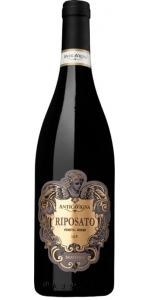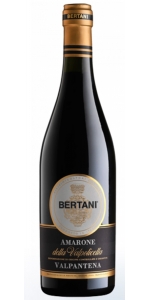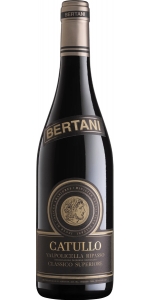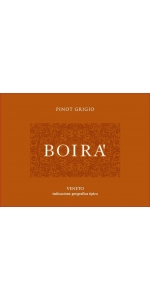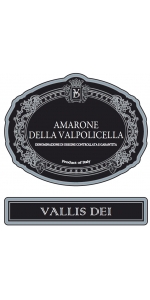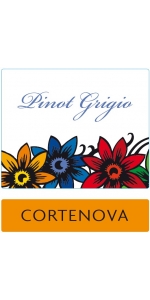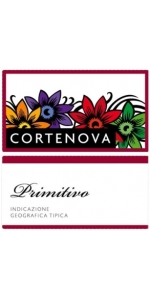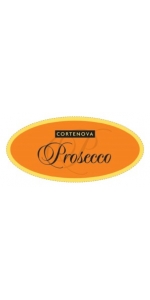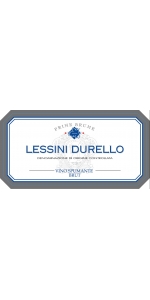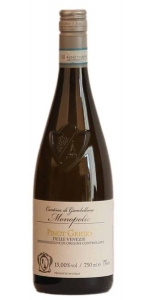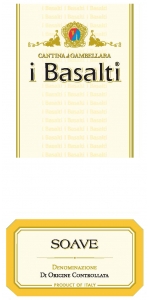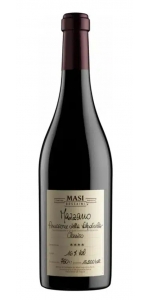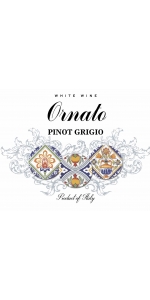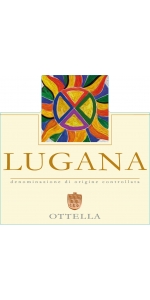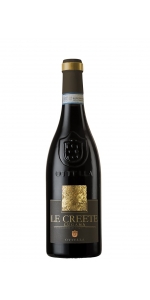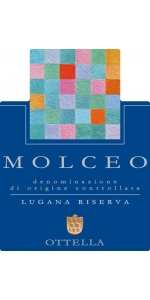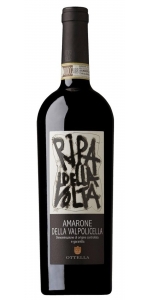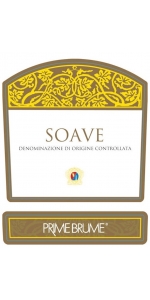Wine from Veneto
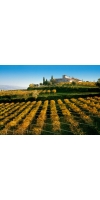
Located in northeastern Italy, Veneto is a wine region and part of a group of three productive wine regions known as the Venezie, named after the ancient Venetian Republic. Veneto is the largest DOC producer of the group.
Veneto is protected from the harsh European climate by the alps, which form the foothills of the of Veneto’s northern extremes. The cooler temperatures are well suited to white grape varieties such as Garganega, which is the predominant grape for Soave wines. The warm river valleys and Adriatic coastal areas are where Bardolino, Amarone, and Valpolicella DOC reds are produced.
The growers in Veneto are much more modern than other regions in Italy, while the majority of the classic wines are based on grape varieties like Verduzzo and Glera, which is now called Prosecco. Veneto wines are in high demand in the US and European markets with producers experimenting with Pinot, Chardonnay, and Cabernet varieties.
In land mass, Veneto is the eighth largest region in the country and has over 90,000 hectares of vineyards. The region produces 8,500,000 hectoliters with white wine accounting for 55%.
In 1885, the first oenology and vine growing school opened in Veneto strengthening the importance of wine making in the region.
Ancient Vineyard Rested Veneto Red
bright ruby color. The nose evolves bright cherry, wildberries, and a touch of spice. The palate is deep and rich, with a long-lasting finish.
Bertani Valpantena Amarone is made from 80% Corvina Veronese, 20% Rondinella.
The best grapes are selected so that only the healthiest and ripest bunches are sent to the drying rooms in the historic winery at Grezzana, where they are laid out in single-layer crates. In mid- January, the grapes are destemmed and crushed, then fermentation starts, at first at a temperature of 39°F- 41°F, which then reaches 72°F in the final stages.
WINEMAKING
The vines are vertical-trellised and Guyot-trained, with a planting density of 2024 plants per acre. Hand harvest is carried out in the middle of September.
This amarone is produced in the Valpantena hills, north of Verona. The soils are calcareous-marl in the east and calcareous-clay in the west, rich in iron.
TERROIR & VINTAGE NOTES
Bertani’s impact on Veneto wine making, particularly in Amarone production, is so considerable that ‘Bertani’ and ‘Amarone’ are nearly synonymous. Their 150+ year history is dotted with groundbreaking initiatives and royal accreditation. While respectful of their past, Bertani strives towards innovation, using progressive techniques and equipment allied with extensive experience and a deeply felt respect for tradition to provide wines of uncompromising quality.
On the nose, marked and intense aromas of very ripe cherries, sour cherries, spicy and nutty notes typical of the Valpantena. Good follow-through of red fruits on the palate, with supple tannins to give depth. This full bodied wine pairs well with rich dishes, mature cheeses and strong-flavored meats.
Bertani Valpolicella Ripasso Classico Superiore Catullo is made from 70% Corvina Veronese, 20% Corvinone, 10% Rondinella. Valpolicella Classica, Tenuta Novare Estate in Arbizzano di Negrar.
Wine of medium structure with elegant spicy notes of vanilla and chocolate accompanied by typical notes of cherry, sour cherry and white pepper. The palate offers the easy drinkability typical of Valpolicella and, at the same time, silky tannic structure and intense, prolonged aromatic persistence. The finish is fresh, soft and savory. A wine in the classic style, elegant, balanced, harmonious.
Review:
If I was forced to choose a number of wines that can steer the anachronistic Ripasso category into a brighter future, this would be among a very few. A mid-weighted, streamlined expression with just enough fruit on the bones. Think strawberries, lilacs, Asian plums, cloves and a hint of licorice. A noble, almost alpine bitterness lifts the finish. Brilliant. Drink or hold.
-James Suckling 95 Points
Boira' Pinot Grigio is made from certified organically farmed vineyards surrounding the city of Verona.
The wine shows a brilliant straw color with golden reflections. Fresh and floral bouquet with a hint of pears, apricots and bananas blended with intense aromas of acacia flowers. Fresh and inviting on the palate with bright fruit and an easy drinking style with a pleasing hint of almonds in the aftertaste.
The average age of the vines is 25 years old. The vineyards' soils are made of stoney calcareous, rich in minerals and fossils that gives this wine bright aromatics and a refreshing lift on the palate. After a 12-hour skin maceration to obtain enhanced aromas, the wine is fermented in stainless steel. The finished wine is placed in stainless steel holding tanks until bottled. Aged 3-4 months in stainless steel.
Pairs well with seafood dishes.
Cantina di Verona Amarone Valpolicella Vallis Dei is made from 65% Corvina Veronese, 30% Rondinella, 5% Molinara
Color: deep ruby red
Nose: Dried prune and blackberry with hints of vanilla and spice
Mouth: It is generously structured and velvety.
Yield: 8000 kg of grapes per hectar – after which the grapes are dried “appassimento”
Grapes are raisin-dried for at least 4 months after harvesting, losing at least 40% of their weight. It is made from selected grapes which are left to dry on racks in specially ventilated rooms until the end of winter.
Fermentation temperature between 18° and 22°C
Maceration time: 20 days
Cortenova Pinot Grigio is 100 percent Pinot Grigio.
Brilliant straw color with emerald reflections.
Fresh and floral bouquet with a hint of pears, apricots and bananas. Fresh and inviting with bright fruit and an easy drinking style with a pleasing hint of almonds in the aftertaste.
Pairs well with seafood dishes, risottos with scampi, spaghetti with clams, sole in white wine Perfect also as an aperitif.
Cortenova Primitivo is made from 100% Primitivo
The grapes are harvested and immediately pressed at controlled temperature. Fermentation is carried out with maceration on the skins for 10-12 days; daily remontages; malolactic fermentation.
Dark, ruby-red color with violet highlights. Intense and fragrant bouquet with a rich array of red and black fruit aromas and flavors. Harmonious and velvety on the palate. Great balance and structure.
Excellent with grilled or roasted meats, game and cheeses.
Cortenova Prosecco Spumante NV is 100 percent Prosecco
This Prosecco comes from the highly esteemed area of Valdobbiadene. There are two recognized quality zones for Prosecco, Conegliano and Valdobbiadene. Of the two, Valdobbiaden has always been recognized a having the superior quality due to its naturally higher acidity and its more northern location.
The vineyards lie at 350 meters above sea level. The vines are an average of 25 years old.
The grapes are soft pressed and the free run juice is placed in stainless steel. There is a brief maceration period of 4 hours. Specially selected yeast are added and fermentation is controlled at 20° C. There is no malolactic fermentation and the wine is transferred to autoclaves and a second fermentation is induced following the Charmat tradition. When the desired atmospheric pressure is reached (usually 1 month) the wine is bottled.
Light straw colored with greenish reflections. The perlage is fine and continuous. Fragrant bouquet full of flowers and almonds. In the palate it is fresh and clean with a soft body and a pleasing sparkle. The fruit is subtle and reminiscent of apples and pears with a hint of almond in the background. The finish is inviting.
Can be drunk by itself as an aperitif or with seafood and fish, pastas with cream sauces, chicken and fresh cheeses.
Review:
"Pale straw color. Bright, attractive aromas and flavors of roasted lemons and kiwis, green nectarine, nougat, and grass with a soft, vibrant, spritzy, dry-yet-fruity medium body and a tingling, complex, medium-length spiced clementine and delicate herbal honey finish with silky, crunchy, fruit tannins and no oak. A delicious, nicely layered Prosecco with an elegant style." - Beverage Testing Institute (November 23rd 2015), 91 pts, Best Buy
Gambellara Lessini Durello Spumante Brute is 100% Durella.
Color: Soft and bright straw yellow
Bouquet: A citrus fresh fruit bouquet
Taste: Slightly acid, fresh, with green apple hints
Perlage: A fine and persistent perlage
The grapes are collected and transported to the winery in small trailers to prevent the grapes from being squashed, then follows immediate separation of the skins from the stalks purifying of the must and long fermentation at 18 °C.
This is a Charmat method (The secondary fermentation didn't take place in the bottle, but in a vat, which makes it slightly different than the Champenoise method used in Champagne).
To serve with seafood starters, soups, egg dishes, shellfish, seafood and white meat. Very good as aperitif. The perfect match is with the "Baccalà alla Vicentina", the traditional dish of our land.
Gambellara Pinot Grigio delle Venezie Monolopio is made from 100% Pinot Gris.
Color: Brilliant pale lemon colored with greenish reflections.
Bouquet: Intense bouquet full of yellow peaches, green apples and delicate white flowers.
Taste: Full, fresh and inviting with great minerality. A wine of excellent acidity and a persistent aftertaste. The overall balance of this wine reflects the care and attention dedicated to the winemaking. It is a Pinot Grigio of distinctive quality.
Seafood dishes, risottos with scampi, spaghetti with clams, sole in white wine, white meats and light cheeses.
RS: 4 grams/Liter
Acidity: 6 grams/Liter
Gambellara Soave I Basalti is made from 100 percent Garganega
Soave DOC (Denominazione di Origine Controllata)
Production area: Soave hills
Vineyard training system: Open pergola
Vinification: Destemming, maceration of the grapes in the must for 12 hours, racking and long fermentation at 18 °C
The color is a brilliant straw yellow with a fresh fruit perfumes, especially apple and pear, and floral notes such as elder and bloom. The taste is very fresh and light, with a very interesting acidity. There is an important presence of mineral salts due to the volcanic origin of the soil. Ideal as aperitif, light main courses such as pasta and risotto, shell fish and fish, soups and vegetables.
Review:
Fresh violets, lilac, wild plums, allspice and wild herbal aromas pour from the glass. The focused palate shows tart cherry preserves, warmed cloves, roasted coffee and dark chocolate that finishes with a crushed chalk minerality. Fine tannins are present but in balance, working with fresh acidity to keep this wine in harmony. Drink now–2045.
-Wine Enthusiast 97 Points
This Pinot Grigio is grown at the foot of the remains of what was once the stunning villa of the della Scala family, one of the most influencial families in Verona from the early 1200's to the late 1300's. The much admired ruler of Verona, Cangrande I della Scala, summered at this villa. Cangrande I was a great warrior, diplomatic prince and an important patron of the arts. He championed the works of Dante, Patrarch and Giotto. He created beautiful architecture throughout the city in the ornate, gothic style of his time. This label is a reproduction of the design taken from a fragment of the ornate and intricate art that once covered the ceilings of the villa. In Italian, Ornato means ornate or adorned. This label celebrates the beautiful, complex taste of the Della Scala family and the Gothic art of that period.
Color: Brilliant straw colored wine with golden reflections.
Bouquet: Fresh and floral bouquet with a hint of pears, apricots and bananas blended with the intense aroma of acacia flowers.
Taste: Fresh and inviting with bright fruit and an easy drinking style with a pleasing hint of almonds in the aftertaste.
Vineyard: Rich in limestone the soil is of alluvial origin. The vineyards are located in the province of Verona. The agricultre is sustainable. No chemical fertilizers, herbicides or pesticides are used. The vineyards are South facing at 300 meters above sea level.
Harvest: September – by hand. The grapes are picked as they ripen to keep the acidity high. The grapes are brought to the cellar and refrigerated within a half hour of picking to keep oxidation to a minimum.
The grapes are soft pressed and the juice is placed in stainless steel along with the skins for a brief maceration of 12 hours at 8-10° C. The must is then racked and lightly filtered. Fermentation then takes place with selected indigenous yeast under controlled temperatures. Of 16-18°C. The fermentation is slow and cool to emhance the natural aromas of the grapes. The finished wine is placed in stainless steel holding tanks until bottled.
Aging: 3-4 months in stainless steel.
Alcohol: 12%
Acidity: 5.30
Seafood dishes, risottos with scampi, spaghetti with clams, sole in white wine.
Ottella Lugana Bianco is produced in South Benedetto di Lugana. 100% Turbiano (clonal type of Trebbiano di Lugana)
The grapes are harvested exclusively from our own vineyards; harvesting is strictly manual in small 17kg-crates. Guyot, double arc training method.
A brief contact on the skin, stainless steel-controlled fermenting.
Intense straw yellow color with green tinges. Exotic notes, candied fruit and citrus, warm and very deep on the nose. Widespread expressive finesse; to the palate the texture is rich and persistant.
Pairs best with fish-based plates, soup, pasta or rice, white meat.
Ottella Lugana Bianco is a white wine made from 100% Trebbiano di Lugana (same as Verdicchio)
The grapes for this wine come from the estate vineyards in San Benedetto di Lugana - vineyards that are most suitable due to the high content of white clay.
Intense straw yellow color with green tinges. Exotic notes, candied and citrus fruits, fine and elegant minerality. Warm and deep on the nose. Expressive finesse, rich and persistent texture on the palate.
Pairs best with fish-based plates, soup, pasta or rice, white meats.
Ottella Lugana DOC Le Creete is made from 100% Turbiano (clonal type of Trebbiano di Lugana)
PRODUCTION AREA: S. Benedetto di Lugana. The grapes are harvested exclusively from our own vineyards; harvesting is strictly manual in small 17kg-crates
TRAINING METHOD: Guyot, double arc
Golden, warm, intense straw yellow. Immediate exotic notes.
It develops in a very pleasant fashion, good mineral impression Rich, succulent and well balanced for a truly
satisfactory mouthfeel. Mineral on the finish with just enough acidity to
provide lift and depth.
FOOD: Sea or lake fish to bring out its outstanding features; goes well with white meat and soup, and has quite a surprising affinity with tasty cheese
ALCOHOL BY VOLUME: 13% vol
SERVING TEMPERATURE: 10-12 degrees Celcius
Ottella Lugana DOC Le Creete is made from 100% Trebbiano di Lugana (same as Verdicchio)
The grapes for this wine come from the estate vineyards in San Benedetto di Lugana.
Golden, warm, intense straw yellow. Exotic notes of pineapple and grapefruit with delicate minerality.
Finesse yet a strong character. Rich and well balanced, firm, mineral wine with a superb pulp.
Pairs best with sea or lake fish to bring out its outstanding features; goes well with white meat and soup, and has quite a surprising affinity with full-flavored and blue cheeses.
Ottella Lugana DOC Riserva Molceo is made from 100% Trebbiano di Lugana - 25-30 years old.
The wine is produced in the area of San Benedetto di Lugana in estate vineyards that are most suitable due to the high content of white clay.
COLOR • Golden, clear, intense.
NOSE • It immediately opens with fruity notes that are enchanting, penetrating and complex. Characterized by hints of citrus fruits, flowers and fine mineral and elegant notes.
PALATE • Complex and intense blend of mineral flavors; captivating, long, lively, both in the persistence and in the strength of the flavors, mingling with unmissable citrus sensation. A delicate evolution, fine flesh, perfect longevity.
Since 2009 it has won every year the TRE BICCHIERI GAMBERO ROSSO award.
The harvest and selection of the grapes are done strictly by hand, in small 17 kg crates.
PLANTING LAYOUT AND YIELD • Double bow Guyot, yield around 8,000 kg. of grapes per hectare, equivalent to 5,040 liters of wine or 63%.
HARVEST PERIOD • Harvest late in October.
FINING AND FERMENTATION • Delicate, soft pressing of the whole bunch for most of the production, the rest with gentle destemming by oscillation. Thereafter, a strict protocol of vinification: partial malolactic fermentation, fining for 16 months on the yeast and fine lees, which mostly takes place in stainless steel tanks (80%) and the rest in wooden tonneaux and barriques.
Stimulating with marine or freshwater fish, it also goes well with savory or fatty meat (goose or pork). Enjoyable with seasoned, herbal cheeses of various types and elaborate dishes.
Review:
This riserva Lugana opens with aromas of baked nectarine with an almond crumble, followed by wafting notes of pressed wildflowers and poached lemon peel. The palate is rich, showing a lime and tropical-fruit cream note topped with sea salt, but balanced by the electric acidity on the finish. Super tasty!
-Wine Enthusiast 93 Points
Elegant and delicate in its sensorial profile, it shows notes of rose petals, linden, geraniums, hawthorn and lime. Medium-full body, radiant and essential in taste, it shows grace and personality and a truly Mediterranean aftertasting. Nice and tasty, fresh and vibrant! One of the best Lugana tastings. Drink now or grow old.
-Raffaele Vecchione - WinesCritic.com 94 Points
Ripa Della Volta Amarone della Valpolicella 70% Corvina, 20% Corvinone, 5% Oseleta and 5% Spigamonte.
The vineyards are located at an elevation of 300-600 metres above sea level, with a south-southwesterly exposure. Training system: Guyot.
It features an intense red color with garnet highlights. The nose offers up a rich variety of aromas with fruity notes of cherries, morello cherries and plums, spices and hints of chocolate. It is round and caressing with soft, mellow tannins balanced by excellent acidity that enhances its drinkability and ageing potential.
It is a wine with a marked personality, great finesse, elegance, and extraordinary longevity.
It pairs well with main dishes such as game and roasts, but also cured meats and mature cheese.
Review:
Strong, dark ruby with a light garnet edge. Intense and very clearly defined nose with notes of ripe plums, dark forest raspberries and some tobacco in the background. Round on the palate with plenty of supple tannin, pleasantly dry, firm pressure in the finish.
-Falstaff 92 Points
The color is a brilliant straw yellow with a fresh fruit perfumes, especially apple and pear, and floral notes such as elder and bloom. The taste is very fresh and light, with a very interesting acidity. There is an important presence of mineral salts due to the volcanic origin of the soil.
Open pergola Vinification: Destemming, maceration of the grapes in the must for 12 hours, racking and long fermentation at 18 °C
Ideal as aperitif, light main courses such as pasta and risotto, shell fish and fish, soups and vegetables.
Review:
Brilliant emerald straw color. Aromas and flavors of brazil nuts, creme fraiche, and kiwi and starfruit with a silky, lively, dry-yet-fruity light-to-medium body and an effortless, engaging, medium-length watermelon, yellow apple, and clementine finish. A delicious, artfully balanced soave with a great range of fruit flavors. 91 Point Beverage Tasting Institue
The color is a brilliant straw yellow with a fresh fruit perfumes, especially apple and pear, and floral notes such as elder and bloom. The taste is very fresh and light, with a very interesting acidity. There is an important presence of mineral salts due to the volcanic origin of the soil.
Open pergola Vinification: Destemming, maceration of the grapes in the must for 12 hours, racking and long fermentation at 18 °C
Ideal as aperitif, light main courses such as pasta and risotto, shell fish and fish, soups and vegetables.
Review:
Brilliant emerald straw color. Aromas and flavors of brazil nuts, creme fraiche, and kiwi and starfruit with a silky, lively, dry-yet-fruity light-to-medium body and an effortless, engaging, medium-length watermelon, yellow apple, and clementine finish. A delicious, artfully balanced soave with a great range of fruit flavors. 91 Point Beverage Tasting Institue
- back
Selected Options
Regions
Categories
Pricing
Countries
Regions
Grape Types
Wineries
Organic/Free Shipping
This is a 9 liter imperial also called a Salmanazar .
Roland Champion Champagne Blanc de Blanc Grand Cru 2014 is made from 100% Grand Cru Chardonnay from the chalky soils of Chouilly.
This Champagne is full of elegance and finesse. Very complex nose, with a bouquet of aromas dominated by honey, brioche and notes of dried fruits, hazelnuts and sweets. Perfectly matured.
Manual harvest; then pressing immediately to avoid oxidation & preserve quality. Free run juice only. Aged six years on the lees.
It matches magnificently with foie gras!
Review:
"Based in Chouilly on the Côte des Blancs, it is obvious this producer will have a Blanc de Blancs Champagne. And very good it is, with some age after six years on lees while still having freshness, crisp acidity and a tight, steely edge. The bottling will benefit from further aging, and it will be at its best from 2022. - ROGER VOSS"
- Wine Enthusiast (December 2020), 92 pt
Oumsiyat Cabernet Sauvignon is made from 100 percent Cabernet Sauvignon.
Classic Cabernet Sauvignon with Dark Berries Dominance mixed with tobacco and chocolate aromas. Concentrated tannins, balanced with good acidity and persistence finish.
RS: 2g/L
The fruit was carefully sorted to ensure only healthy, ripe grapes were vinified. Traditional fermentation took place in stainless steel tanks at controlled temperatures of 28°C, with remontage or pump overs took place periodically to oxygenate the wine and extract tannins. Pigeage or punching down of the cap also took place. A long post-fermentation maceration took place to extract color, flavor and impart structure to the wine. The wine was gently filtered prior to bottling.

